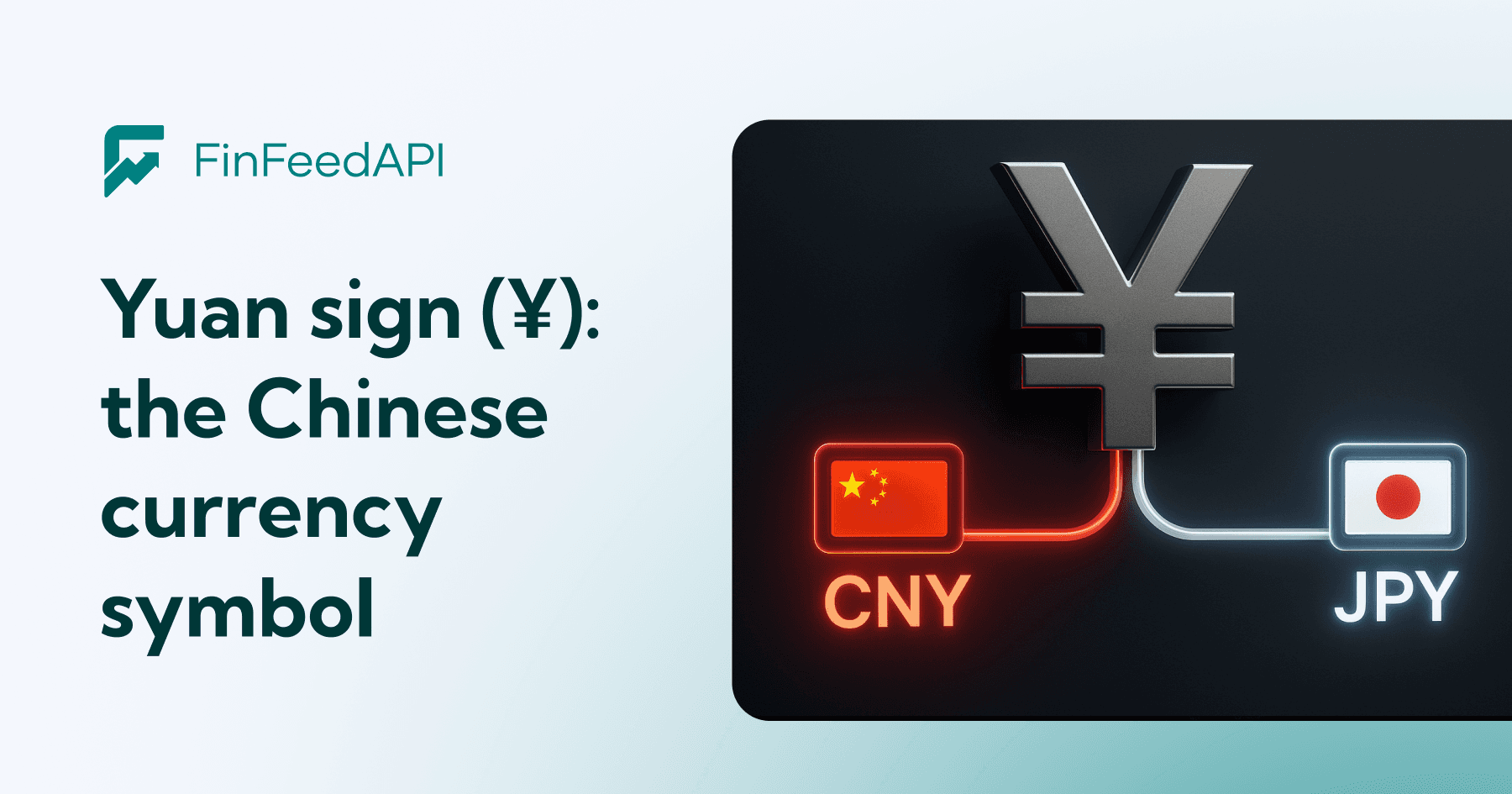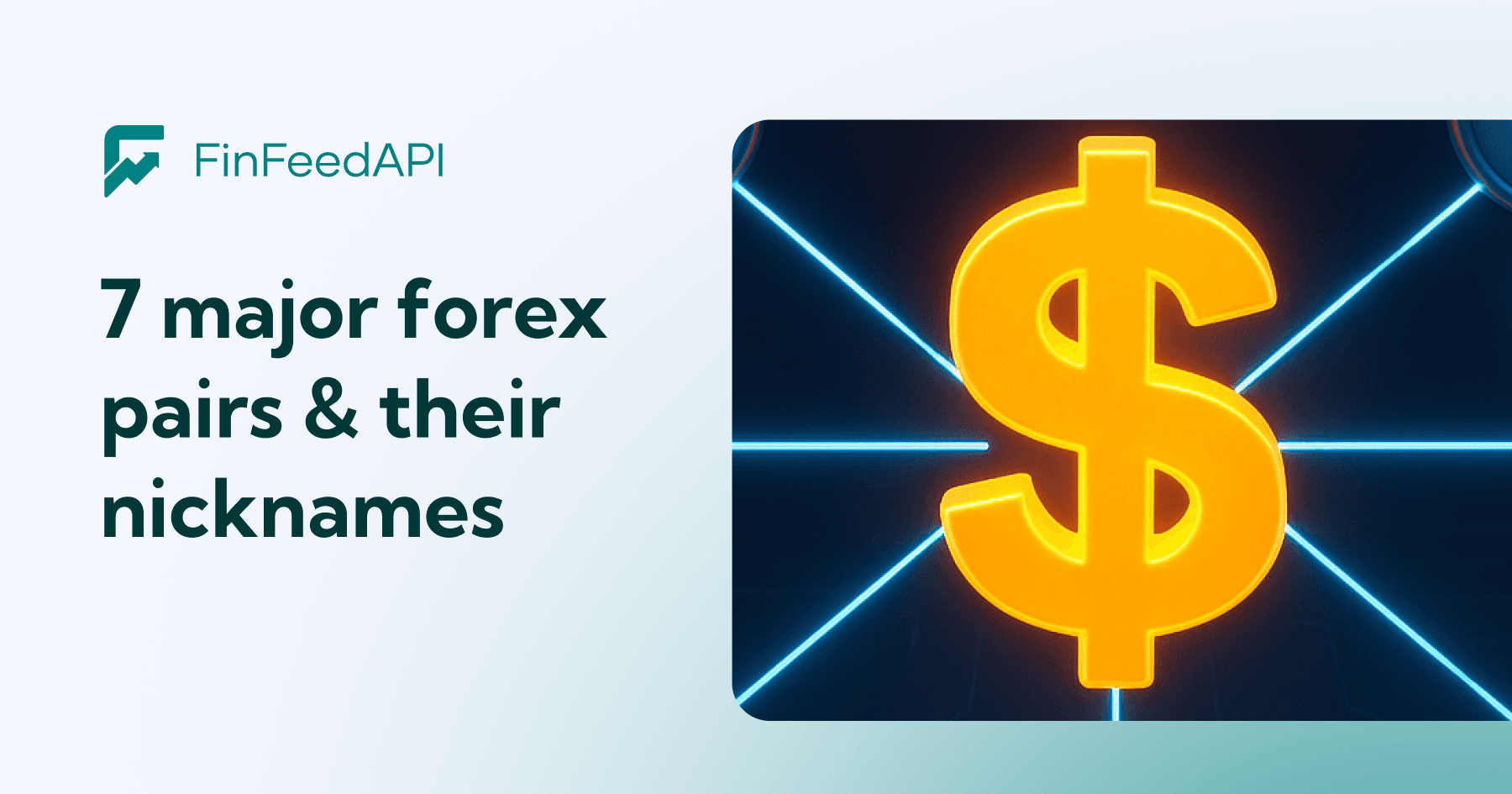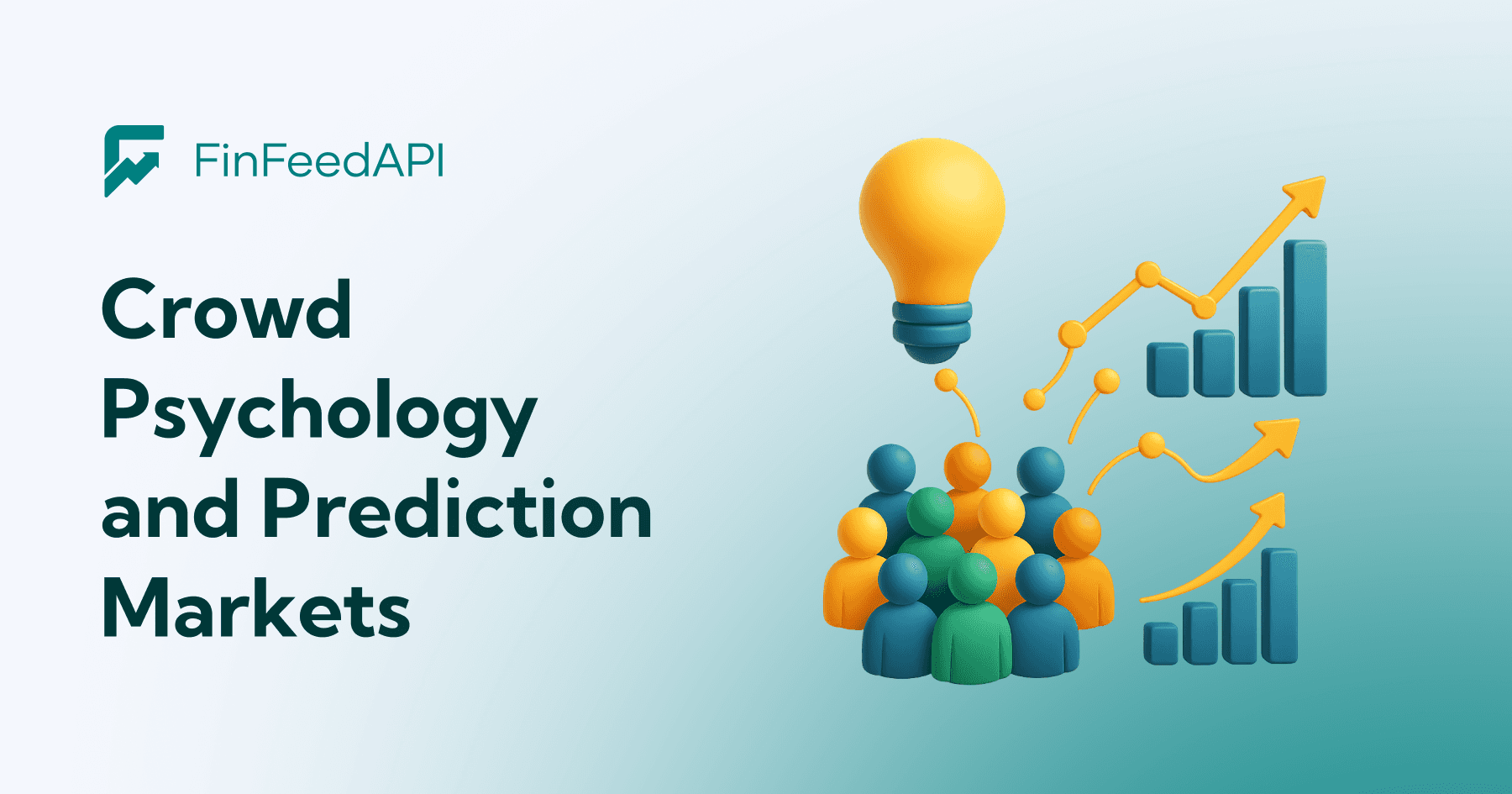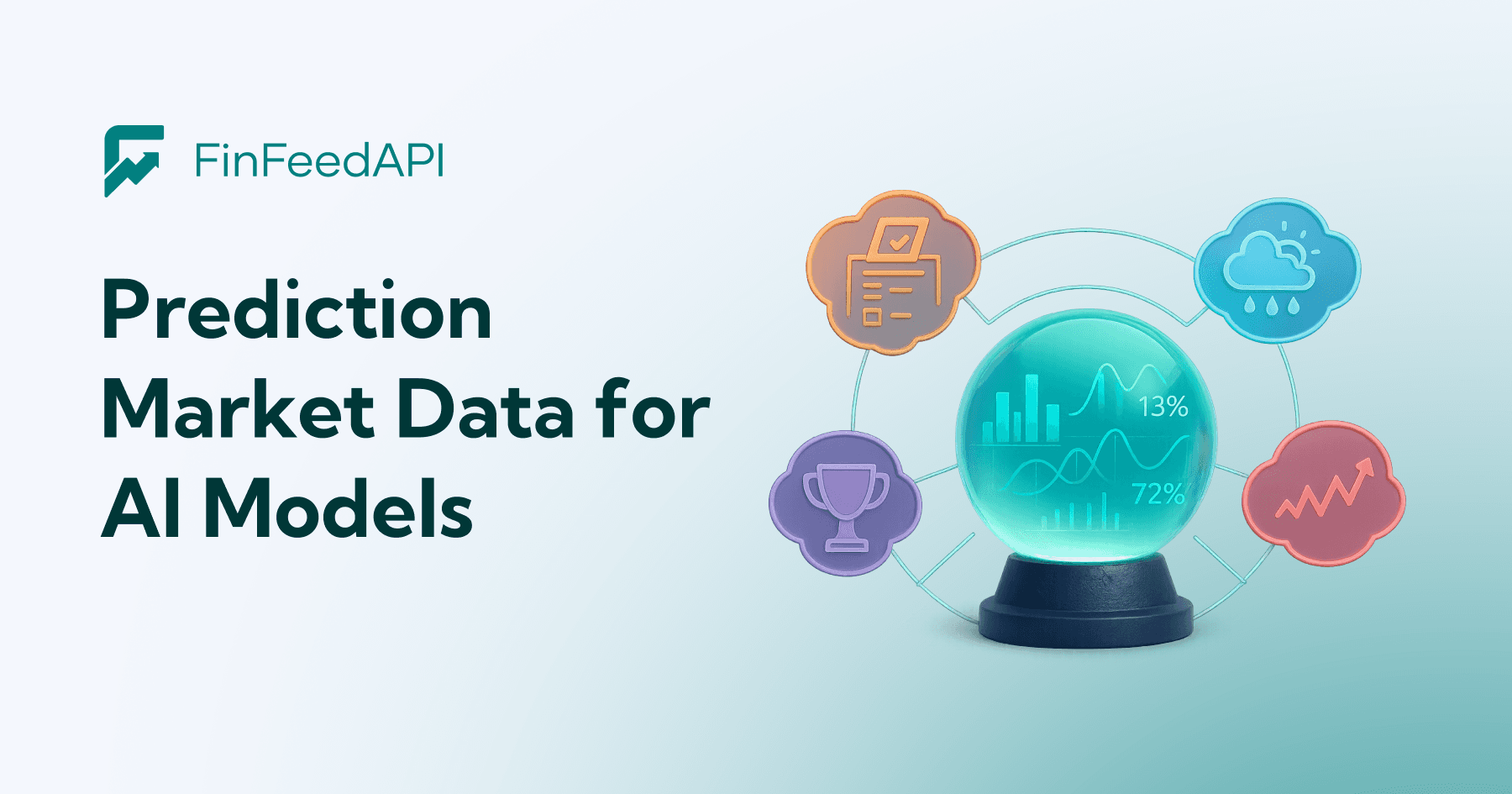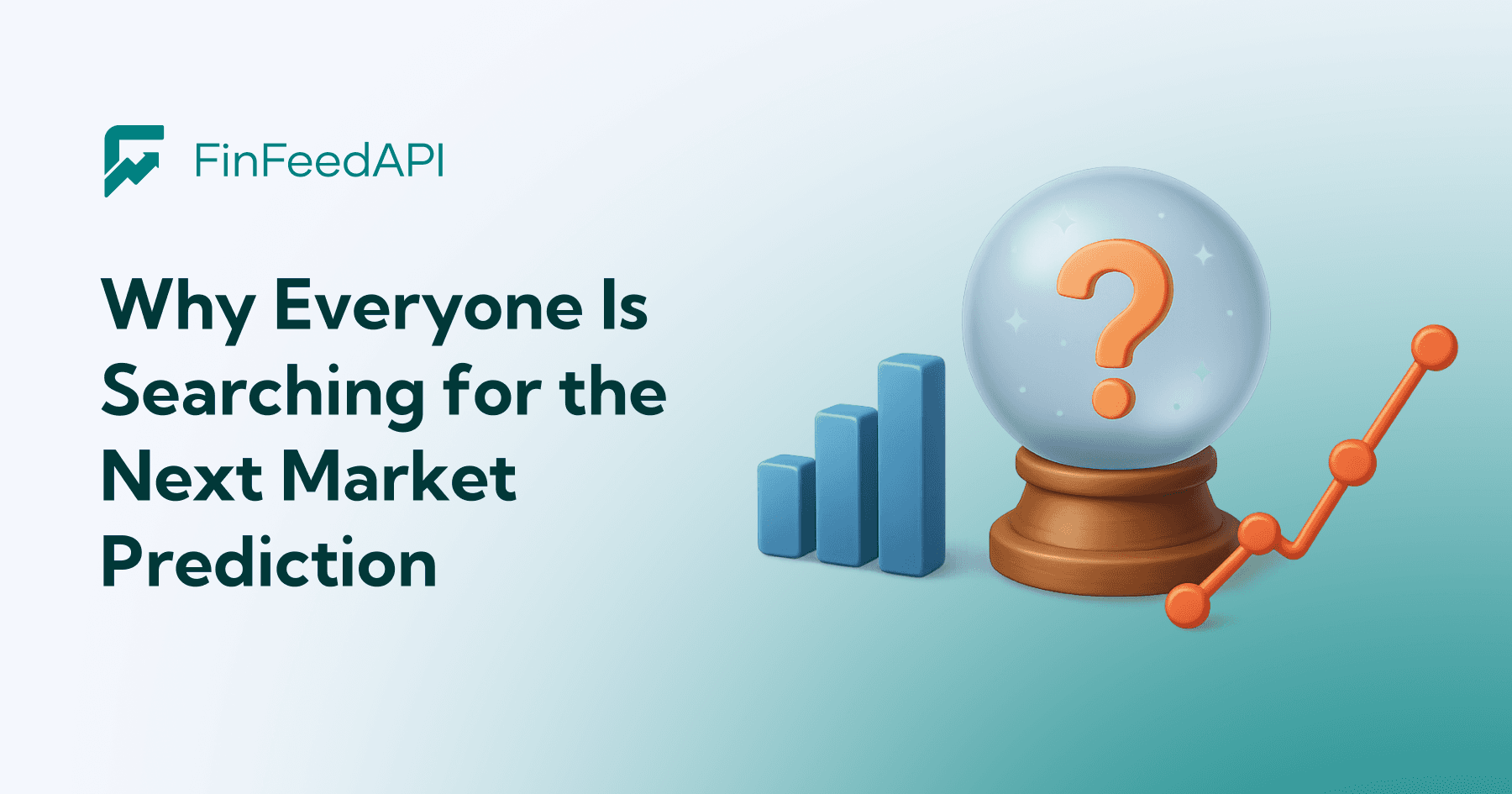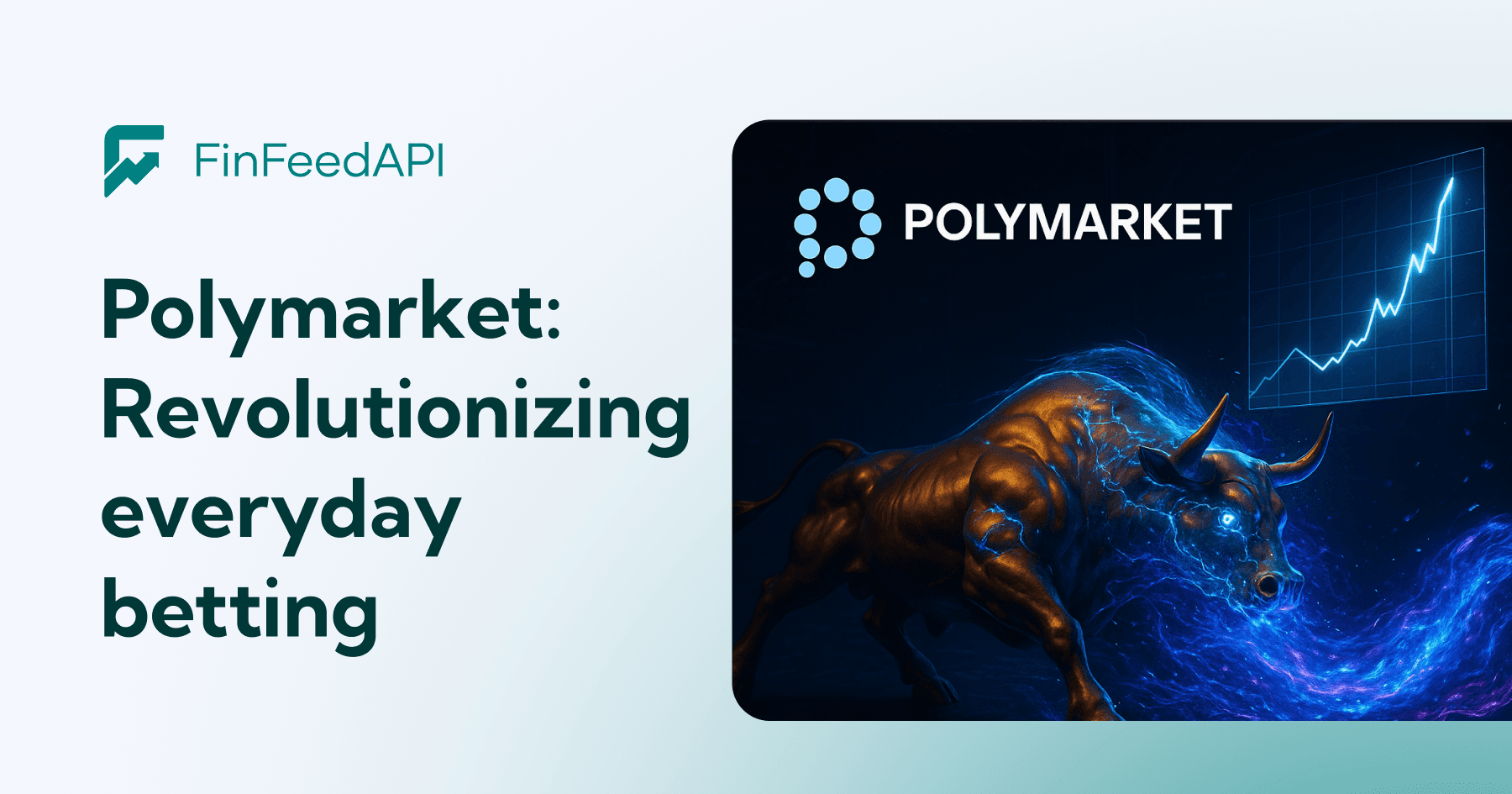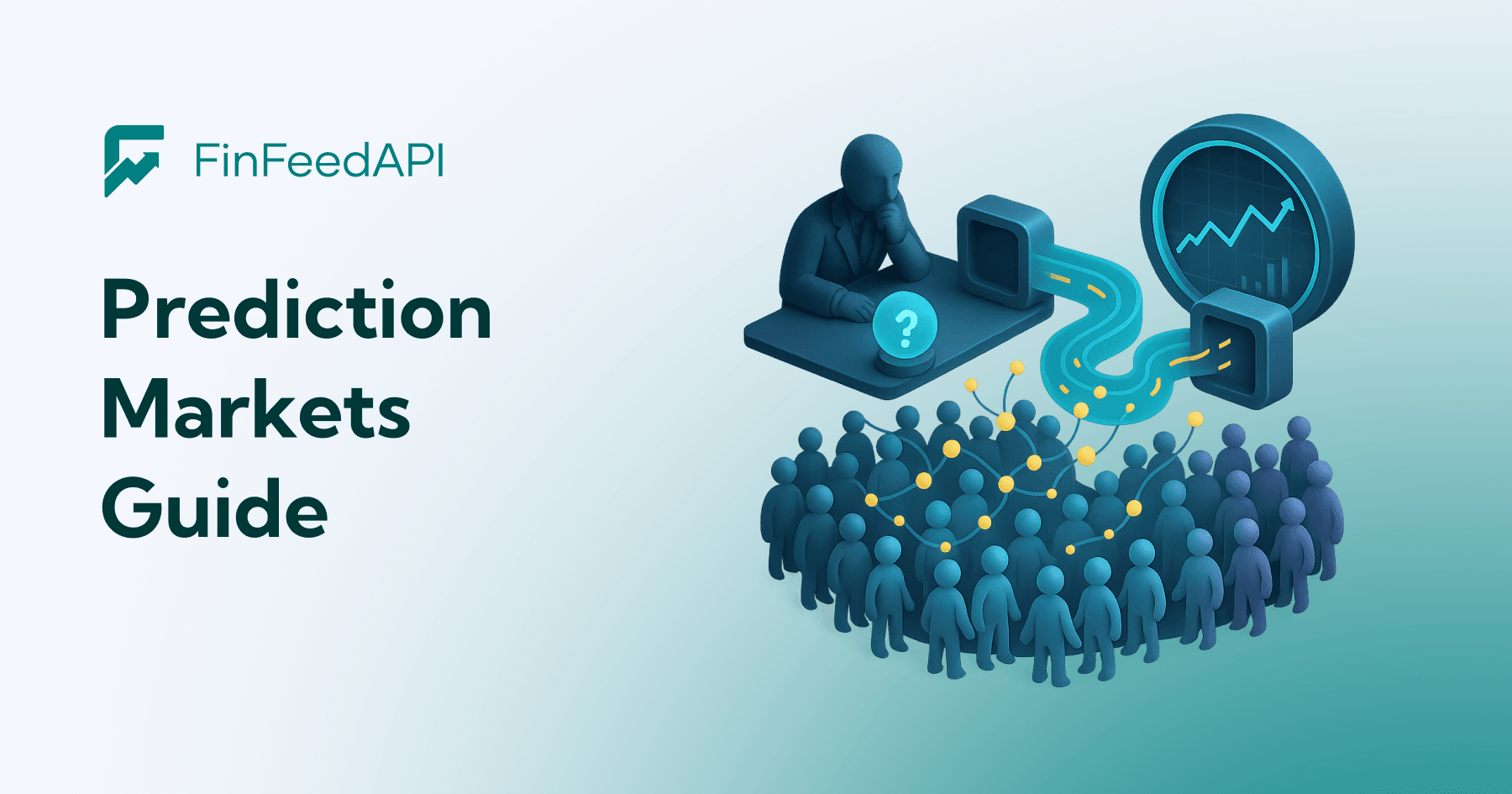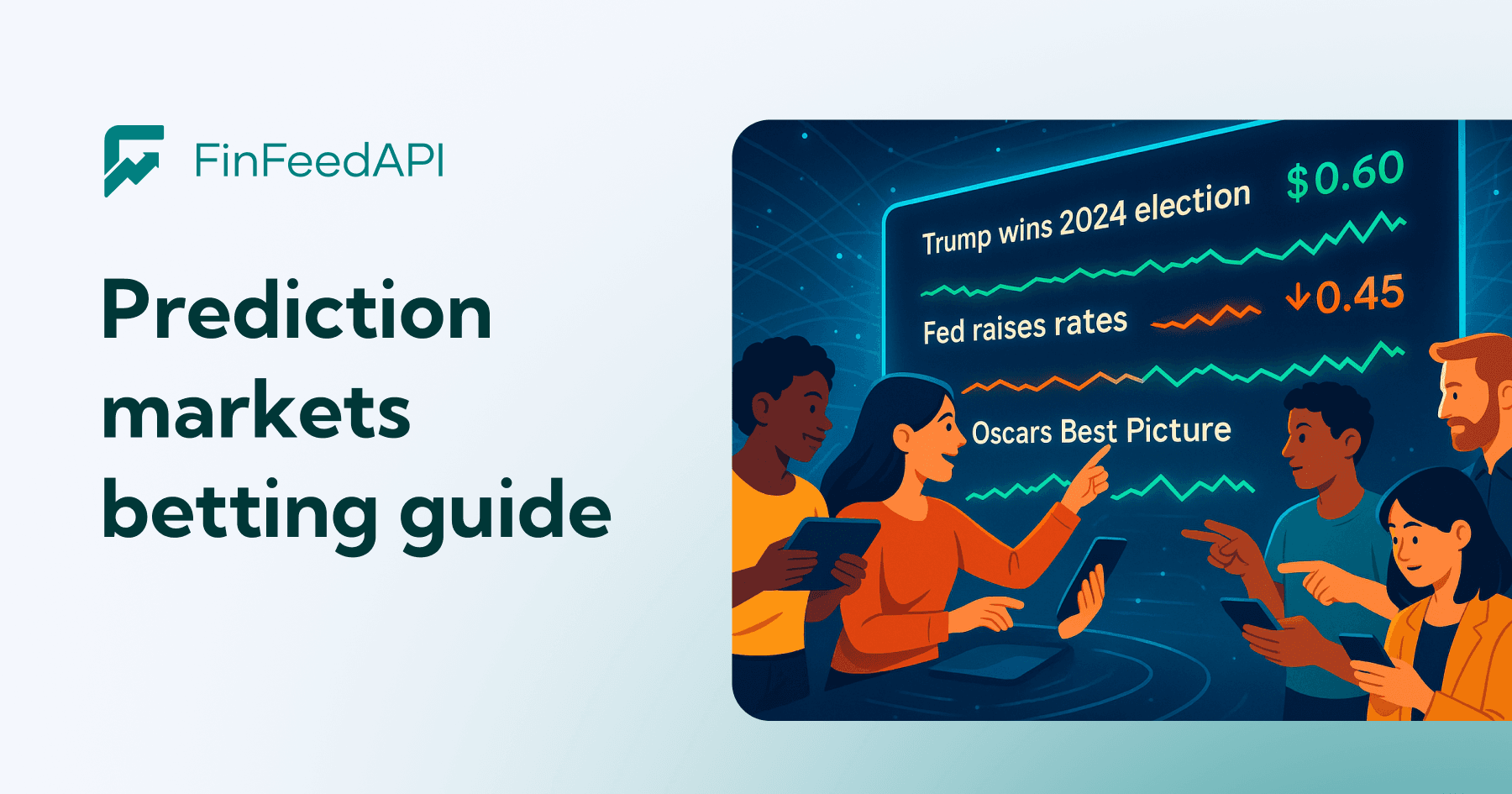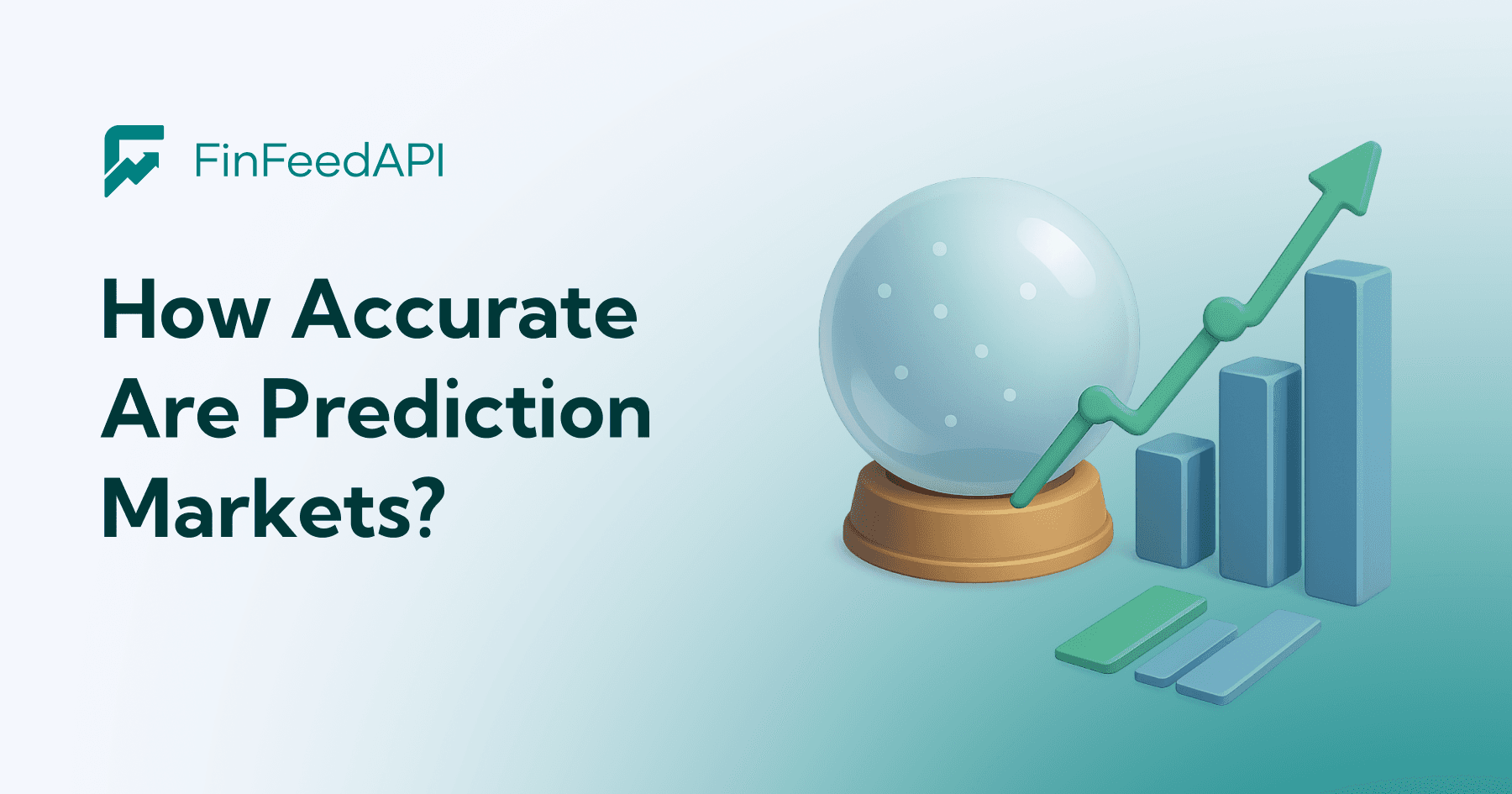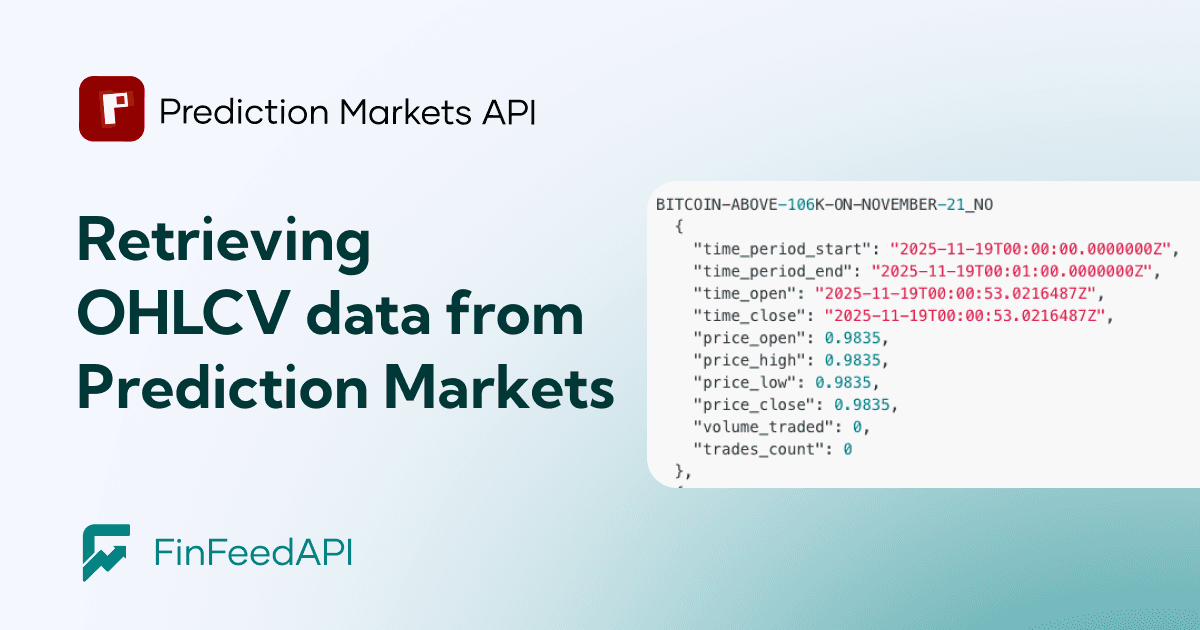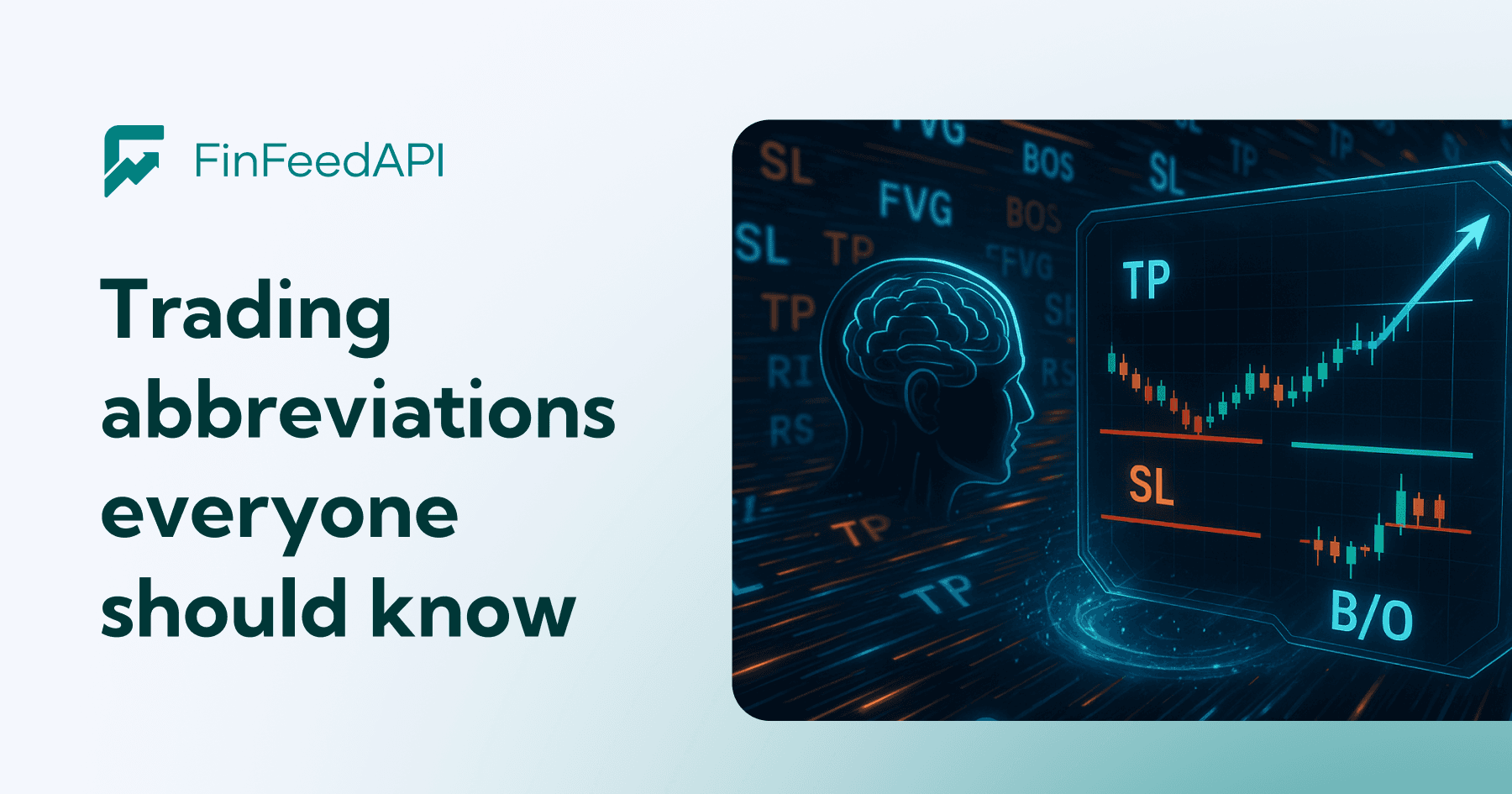Prediction markets are having a strange moment right now.
They’re not new. They’re not flashy.
And they’re not built on hype.
But suddenly, everybody—from analysts to builders to AI teams—is paying attention.
Why?
Because prediction markets offer something the modern world desperately needs:
A clean, real-time signal of what people truly expect to happen next.
Not what they say. Not what they hope.
But what they believe strongly enough to put money, tokens, or reputation behind.
This guide breaks down prediction markets in a simple, honest way.
No jargon.
No finance-speak.
Just how they work, why they matter, and what you can do with prediction market data today.
What Are Prediction Markets?
Prediction markets are tools for trading on the future.
But instead of buying stocks or coins, you trade on outcomes — real-world events that haven’t happened yet.
“Will this candidate win?”
“Will this rate change?”
“Will the product launch happen on time?”
“Will the number come in above or below expectations?”
Each outcome has two sides: Yes or No.
People buy whatever matches their belief. If more people buy Yes, the Yes price rises. If confidence drops, the price falls.
That constant back-and-forth creates something powerful: a live probability.
If Yes trades at 0.67, the market is saying:
“Right now, the crowd thinks this has a 67% chance of happening.”
But the magic isn’t the number. It’s how the number moves. Prediction markets don’t wait for polls. They don’t wait for experts. They don’t wait for someone to write a report.
They move the moment someone — anyone — learns something new.
People trade based on what they know, what they notice, and what they feel:
news, rumors, data, confidence, fear, risk, timing, instinct.
When thousands of people bring their information and emotion into the same place, the market blends it all together.
The result is not a guess. It’s not an opinion.
It’s a real-time measurement of belief — constantly adjusting, correcting, reacting, and updating. This is why prediction markets are so valuable.
They transform messy human reactions into something clean and usable:
prediction market data.
Data that shows how expectation changes from moment to moment — faster than polls, faster than experts, faster than the news cycle itself.
How Prediction Markets Function
Most explanations get this wrong because they treat prediction markets like a technical tool. Prediction markets are not technical.
They’re psychological. They work because thousands of small reactions build a big picture over time.
Here’s how it really works:
Something happens. Maybe small. Maybe big.
A speech. A headline. A rumor. A tweet. A data release.
Someone reacts instantly. They buy.
Someone else sees that move. They follow.
Another person thinks the first two are wrong. They push the price back the other way.
You now have a market.
Information → reaction → counterreaction → correction.
The beauty is in the speed. People react before articles are written.
Before TV hosts talk about it. Before official reports come out.
Prediction markets collect thousands of tiny human reactions and turn them into a number the world can use.
That number is usually ahead of the news cycle by hours—sometimes days.
How to Read Prediction Market Data (Step by Step)
Most people look at a prediction market chart and see a squiggly line.
But if you know what you’re looking at, that line tells you the whole story of what the crowd believed over time.
Let’s break it down in simple steps.
1. Start With the Basic Setup: Yes vs No
Most prediction markets are yes/no markets.
Example:
“Will Candidate A win the 2028 election?”
There are two sides:
- Yes shares – pay out if the event happens
- No shares – pay out if the event does not happen
On many platforms, each share is priced between 0 and 1 (or 0 and 100).
Think of that price as a probability.
- A Yes price of 0.70 ≈ 70% chance it happens
- A Yes price of 0.30 ≈ 30% chance it happens
In a simple world (ignoring fees), the No side is just the opposite:
- Yes at 0.70 → No is worth about 0.30
- Yes at 0.30 → No is worth about 0.70
You don’t need to memorize anything more complicated than that.
2. Understand What the Charts Are Showing
On a typical prediction market chart:
- The horizontal axis is time
- The vertical axis is the price of the Yes side (and sometimes the No side too)
That line you see moving up and down is the crowd’s view of the probability of “Yes” over time.
So if the line climbs from 0.40 to 0.65, the story is:
“The crowd now thinks ‘Yes’ went from a 40% chance to a 65% chance.”
Every jump, dip, or flat line is the crowd reacting to information (or the lack of it).
3. Follow the Story in the Price Moves
Instead of staring at the chart, ask:
- “What changed here?” at this spike
- “What scared people?” at this drop
- “What calmed the market?” at this slow climb
For example:
- Big spike up? Probably breaking news in favor of Yes.
- Sudden crash? Bad news, debunked rumor, or a strong move for No.
- Flat line for days? No new useful information. The crowd is “parked” at that belief.
You don’t always know the news behind every move.
But you always know what the crowd did with it.
4. Who Earns When? Yes and No Payouts
A prediction market always ends with resolution — the event happens or it doesn’t.
At resolution:
- If Yes is correct (the event happens), Yes shares pay out 1 and No shares pay out 0
- If No is correct (the event doesn’t happen), No shares pay out 1 and Yes shares pay out 0
Simple example:
- You bought 10 Yes shares at 0.40
- The event happens
- Each Yes share is now worth 1.00 at resolution
- Your profit is: (1.00 – 0.40) × 10 = 6.00 units
Flip it:
- You bought 10 No shares at 0.70
- The event does not happen (so No is correct)
- Each No share is now worth 1.00
- Your profit is: (1.00 – 0.70) × 10 = 3.00 units
You earn when:
- You buy low and sell high before resolution, or
- You buy a side you believe in and hold until resolution
Either way, you’re getting paid when your view of the future is more accurate than the crowd’s was when you entered.
5. Why Resolution Rules Matter
Every prediction market has resolution criteria — the “rules of the game” that say exactly what counts as Yes or No.
Good markets define:
- Which source decides (e.g., official results, specific website, court ruling)
- What happens if something weird happens (cancellation, postponement, unclear outcome)
Why this matters for charts:
- If resolution rules are vague, traders may price in extra “messiness risk”
- If rules are clear, the chart reflects pure belief in the outcome, not confusion about how it will be judged
When you read a chart, you’re not just asking “Will this happen?”
You’re also implicitly asking “Will this happen in a way that fits these rules?”
6. Putting It All Together
When you look at a prediction market chart now, read it like this:
- The level of the line = the crowd’s belief in “Yes” at that moment
- The moves in the line = fear, hope, correction, new information
- The Yes/No prices = two sides of the same bet
- Resolution = the final check: who was right, and who gets paid
Once you see it this way, prediction market charts stop being “finance graphs”
and start being simple, visual stories of belief over time.
Types of Prediction Markets
Let’s avoid the dry “political, sports, financial” categories for a moment and look at prediction markets the way people actually use them.
When you look closely, there are four major types, each one tied to a different purpose and a different kind of thinking.
1. Markets for Clarity (Real-World Events)
These are the markets people watch when the stakes are high and uncertainty is uncomfortable.
Elections. Central bank decisions. Inflation prints. Job numbers. Court rulings.
These markets act like emotional stabilizers.
People use them to make sense of events where traditional forecasting tools are too slow or too noisy.
They answer the question: “Where does the crowd think this is heading?”
2. Markets for Curiosity (Consumer Behavior & Culture)
These are the markets that feel like looking into the internet’s brain.
"Will a company ship a feature?"
"Will a rocket land?"
"Will a celebrity trend?"
"Will a tech CEO keep a promise?"
These markets move fast. They’re playful.
They help people understand cultural momentum—what the crowd wants or expects even before it’s official.
They answer the question: “What does the crowd think might happen next?”
3. Markets for Truth (Internal Company Markets)
Inside companies, prediction markets are used privately to get honest answers no one is comfortable saying out loud.
“Will we hit this deadline?”
“Will we ship this quarter?”
“Is this project actually on track?”
Employees bet anonymously.
The truth surfaces quickly. These markets reveal internal reality long before management reports do.
They answer the question: “What’s actually going to happen here?”
4. Markets for Speculation (Financial and Crypto Markets)
This is where prediction markets overlap with trading.
People trade based on:
- market sentiment
- macro expectations
- crypto events
- regulation
- product launches
- mergers
- rate decisions
Speculation markets are the most data-rich. They blend emotion with information, creating extremely valuable forecasting signals.
They answer the question: “What does the crowd believe this move is worth?”
Leading Prediction Market Platforms
Every prediction market reflects the psychology of the people who use it. That’s why different platforms produce different styles of prediction market data.
Here are the four shaping the space right now:
Polymarket
Polymarket is the largest global crypto-based prediction platform, often moving more than $2 billion during major news cycles.
It runs on blockchain rails, allowing fast, open access outside traditional banking — though U.S. users face restrictions.
Polymarket is the platform where global sentiment shows up first. It’s fast. It’s reactive.
It moves before the news cycle settles. The user base is international, extremely online, and quick to interpret new information. A rumor at 3:02 PM becomes a price move at 3:02:05 PM.
If you want to understand how the broader internet reacts to events in real time, Polymarket gives the clearest signal.
Kalshi
Kalshi is the top regulated prediction market in the United States.
It operates under full CFTC oversight and recently won court decisions that allow it to list congressional election markets — a major expansion after years of limits.
Kalshi’s markets behave more like financial instruments. Less noise. More structure. More stability.
If you want prediction market data that feels institutional and steady, Kalshi is the source.
Myriad
Myriad is the platform built with developers in mind. Flexible markets. Programmable design. Clean integrations.
It’s ideal for teams who want to experiment, build new tools, or embed prediction features into apps. Myriad produces highly structured data that’s easy to use inside models, dashboards, or forecasting systems.
If you’re building something new with prediction market data, Myriad feels like an engine you can plug into.
Manifold
Manifold fills the play-money space. They let users build forecasting track records without risking real money, often focusing on long-term or niche questions that don’t get enough liquidity elsewhere.
Manifold is where prediction markets feel human.
It’s social. It’s creative. People trade with intuition, curiosity, and imagination—not just profit motive. Even with play money, the markets often predict surprisingly well.
Why?
Because people think more freely when they’re not stressed about losing money.
Manifold’s prediction market data reflects collective intuition in a way traditional markets can’t.
Across these platforms, you get four different types of crowds—fast, disciplined, experimental, and imaginative.
Together, they create a richer, more complete picture of how people think about the future.
Prediction Markets vs Polls (Why Markets Often Win)
Polls ask what people say. Prediction markets show what people do.
Polls are static snapshots. Prediction markets are living systems.
Polls suffer from:
- social pressure
- selection bias
- outdated responses
- people giving “safe” answers
Prediction markets bypass all of that. When people have skin in the game, they reveal their real expectations — not their polite ones.
This is why, historically:
- markets predicted elections more accurately than many major polling models
- markets adjusted faster to scandals, debates, or viral moments
- markets avoided “herd errors” that misled pollsters
Prediction market data updates whenever new information appears — even at 2 am — making it far more dynamic.
Advantages and Limitations
Why prediction markets are powerful:
- Crowds correct mistakes fast.
- Data updates instantly.
- People trade on real belief, not social pressure.
- Markets highlight emotional spikes—fear, hype, confidence.
- AI models love structured, simple probability data.
Where prediction markets struggle:
- Small markets can get weird.
- People overreact to rumors.
- Regulation keeps some markets small.
- Liquidity isn’t equal across platforms.
- Not every event has a market.
But here’s the big insight: Prediction markets don’t have to be perfect to be useful.
They just need to be honest.
And they are.
Getting Started With Prediction Markets (Without Getting Lost)
The best way to learn prediction markets isn’t by trading right away.
It’s by watching how the market thinks.
Start by picking one topic you already understand — politics, sports, tech, crypto, anything that feels familiar.
Open a few active markets in that category. Then watch what happens when new information appears.
A speech. A rumor. A data release. A headline that changes the mood.
You’ll see prices jump, pause, fall, and settle again.
Those small movements are people adjusting their beliefs in real time. At first, it might look random. But after a few days, patterns start to show up:
- fast spikes when something surprising hits
- slow climbs when confidence builds
- sharp drops when rumors get corrected
- flat lines when there’s nothing new to think about
This is the rhythm of prediction markets — the push and pull of thousands of minds reacting at once.
Once you can recognize those patterns, you’re ready for the next step: making a small trade.
Not to win big.
Not to gamble.
But to feel what it’s like when the market challenges your assumptions.
Trading small helps you understand how belief changes when you have something at stake.
It helps you learn faster. It helps you read markets more clearly. Start tiny.
Focus on learning, not winning.
Understanding the crowd is the real skill — the rest comes later.
The Future of Prediction Markets
Prediction markets are moving into a new stage — and this time, the story isn’t about trading. It’s about data.
For years, prediction markets were seen as tools for people who enjoy forecasting. Now they’re becoming something bigger:
a real-time data source for systems that need to understand the world as it changes.
Prediction market data has a special quality most datasets don’t have:
it updates the moment the crowd learns something new.
This makes it incredibly valuable for:
- AI models that need live signals
- reasoning systems that learn from human belief
- risk tools that must respond to breaking events
- forecasting engines that require clean probabilities
- dashboards that track sentiment in real time
Instead of waiting for polls, reports, or expert commentary, prediction market data shows the shift instantly. It reflects the crowd at the exact moment information spreads.
As more teams build tools around this, prediction markets stop being “platforms” and start becoming something closer to infrastructure — a shared layer of expectation data that powers apps, models, and analysis.
And prediction market APIs make this even easier.
You no longer have to scrape websites or stitch together messy feeds.
You tap into a clean stream of probabilities, trends, and market reactions as they happen.
The direction is clear:
Prediction market data is becoming a core input for real-time forecasting — for humans, for companies, and for AI.
It’s not a niche dataset anymore.
It’s becoming part of how modern systems understand the future.
Build With Prediction Market Data
If you want to work with prediction market data and event probabilities — for dashboards, trading models, election trackers, or research tools — you don’t need to scrape multiple platforms or stitch data together by hand.
FinFeedAPI’s Prediction Markets API gives you:
- Latest prediction market prices
- Access to major platforms (including Polymarket)
- Clean, normalized endpoints
- High-frequency updates
- Easy integration for dashboards, bots, and models
If your product needs to predict anything — markets, crypto, macro, cycles, events — this is the data layer that makes it possible.
👉 Start using the Prediction Markets API at FinFeedAPI.com — and turn uncertainty into a feature, not a fear.
FAQ
Are prediction markets the same as sports betting?
Not really.
Both involve wagering on outcomes, but they work differently. Sports betting uses fixed odds created by a bookmaker, while prediction markets use market forces — prices move based on what traders actually believe.
Prediction markets also cover far more than sports: elections, economics, crypto milestones, tech launches, policy changes, cultural events, and more.
In many regions, prediction markets are treated more like financial instruments than gambling products.
What happens if an event gets canceled, delayed, or becomes unclear?
Every market has resolution rules, and those rules decide the outcome.
If an event is canceled, markets often settle as “No,” but some platforms issue refunds if the cancellation breaks the original terms.
If the event is postponed, trading usually continues until the new date — unless the contract includes a deadline or fallback clause.
Always read the settlement notes; unclear rules can create unexpected outcomes and extra risk.
Can institutional investors or funds trade prediction markets?
Yes — more than ever.
Platforms like Kalshi, and emerging enterprise-focused prediction engines, allow compliant institutional accounts.
Some impose position limits, KYC requirements, or reporting thresholds, but institutions can and do trade.
Their presence has improved liquidity and smoothed out price distortion, especially around macro events like CPI releases, interest rate decisions, and elections.
How accurate are prediction markets compared to experts and polls?
Multiple studies show prediction markets often outperform both.
Markets update continuously, while polls and expert predictions are slow, periodic, and often influenced by bias.
Corporate trials — such as those at Hewlett-Packard — showed internal prediction markets beating official forecasts by 10–30%.
However, markets aren’t magic.
When everyone shares the same blind spot (Brexit, 2016 U.S. election), markets can miss big turning points.
What’s the minimum amount needed to start trading?
It depends on the platform.
Kalshi has no minimum deposit and charges just a penny per contract.
Polymarket requires crypto and may involve network fees, so costs vary.
Manifold uses virtual currency, so you can experiment with almost no financial risk.
In general, most traders start with $100–$500 to spread across several markets — but prediction markets can go to zero, so only use money you’re comfortable risking.
Are prediction markets only for traders?
No.
Analysts use prediction market data to track sentiment.
Journalists use it to explain fast-changing events.
AI teams use it as a clean probability input for forecasting models.
Businesses use it internally to check deadlines and project risk.
Prediction markets are tools for anyone who wants clearer expectations — not just for people who like to trade.
Can prediction market data be used without trading?
Absolutely.
You can use a prediction market API to pull live prices, historical trends, and event metadata without placing a single trade.
Many companies consume prediction market data just like they consume stock data or news feeds — as a signal for dashboards, models, or research.
Can prediction markets be manipulated?
Short-term? Sometimes.
Long-term? Rarely.




